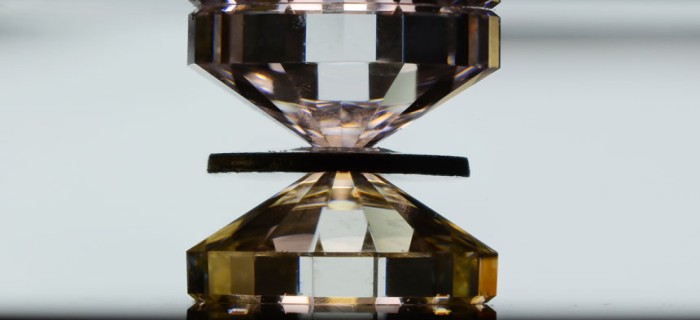
Scientists announces advancement towards a superconductor material that could conduct electricity in everyday conditions.
18 Mar 2023
Scientists announced advancement towards a superconductor material that could conduct electricity in everyday conditions. The breakthrough means a stunning transformation into any technology that uses electric energy. The breakthrough also means the opening of new possibilities for your phone, magnetically moving trains, and future fusion power plants. A peer-reviewed accounting of the findings was published on Wednesday in the Nature journal.
The new superconductor consists of lutetium, a rare earth metal, and hydrogen with a little bit of nitrogen mixed in. It needs to be compressed to a pressure of 145,000 pounds per square inch before it gains its superconducting prowess. That is about 10 times the pressure that is exerted at the bottom of the ocean’s deepest trenches.
A team of physicists led by Ranga Dias, a physicist from the University of Rochester in New York, claims it might have cracked it. The team demonstrated a rare earth metal lutetium combined with hydrogen and nitrogen conducted electricity without resistance at 21 degrees Celsius (70 degrees Fahrenheit) and around just 10,000 atmospheres of pressure, which may sound unusably high amount, but the physicists point out that even higher pressures are currently used in engineering processes such as chip manufacturing.
Why is it important?
It is important because the superconductors can now work at room temperature. Although superconductors have existed for nearly a century, their use was only feasible at unearthly, ultracold temperatures with limited applications if not negligible.
For decades, scientists have sought superconductors that work at room temperature, and their hunt appears to have achieved fruition.
If the breakthrough is confirmed in subsequent tests, it would help create devices that do not waste energy on heat when producing a current and could be used to create more efficient computers; superior X-ray technology; and even more powerful nuclear reactors.
Why is there skepticism around discovery?
The skepticism is mainly for the fact that in 2020, a paper by a team of scientists describing a less practical superconducting material was retracted after scrutiny by a group of scientists about some of the data.
Superconductivity was discovered by Heike Kamerlingh Onnes, a Dutch physicist, and his team in 1911.
The first known superconductors required temperatures only a few degrees above absolute zero or minus 459.67 degrees Fahrenheit. In the 1980s, physicists discovered high-temperature superconductors whose applicability was minimal in everyday life.
The latest discovery adds a luminous layer of applicability for the use of superconductors in everyday life.


 (1).gif)
leave your comment